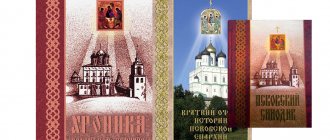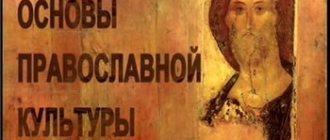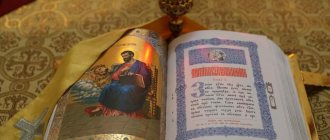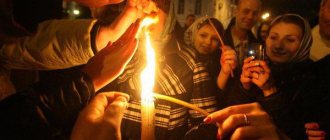Home — Catalog —
Many people who own ancient icons wonder how to determine the age of the icon,
to have an idea of its real value. Ancient faces of saints have always attracted the interest of antiquarians, collectors and antique lovers. They have been and remain one of the win-win investments that can bring real family benefits to any family at any time.
Determining the age of an ancient icon requires a professional approach
To determine the age and value of an icon, many specific criteria must be taken into account. Not only the technical aspects and attributes listed above are important, but also the artistic features. Masters of different centuries, schools, and styles differed in their different paint application techniques and manner of depicting saints.
A person far from art history and icon painting will not be able to independently determine how old an antique is. Only professionals who have been working in this field for many years will help you do this. One of these experts is in Moscow. By contacting its specialists, you can determine the period of creation, the cost of the product online and get advice on a quick and profitable sale.
Serious development of the antique business requires a serious approach to the evaluation of antique products. This question especially concerns icons - one of the most revered shrines and popular collecting objects in Moscow and beyond. The variety of icon painting schools, many techniques, different levels of icon painters and other factors gave rise to the need to conduct an examination of icons.
Any antique item has its own history and price. The temptation of individual businessmen is too great: to create a fake and pass it off as a rarity. This is especially often done with holy faces. Attempts to restore an old but damaged icon, renew the varnish layer or replace the frame virtually destroy the original value of the object and force both sellers and potential buyers to look for a place where they can have the icons examined.
Let’s say right away that finding specialists in Moscow who can perform a high-quality examination of icons is not so easy. Basically, these are employees of museums or research institutes with the proper knowledge and experience. It is quite difficult to independently find where you can carry out an examination of icons in Moscow. Therefore, we advise you to pay attention to reputable companies that have been working in the antiques industry for a long time. Real specialists do not advertise in newspapers. Their names are passed on from mouth to mouth, and all self-respecting large antique salons strive to cooperate with experienced specialists who examine icons.
The basis
In the old days, images were painted on wood. Such icons date back to the 14th - 17th centuries. The spread of three centuries is significant: during this time, technology changed, which was reflected in the appearance of the relics. It is the subtleties of making the base that experts pay attention to.
Rough edges and nicks are a sign of an old image. Such traces remained from the ax, which was used to hew out boards for icon paintings. Flat grooves indicate the use of a plane in processing, and hole-shaped grooves indicate a scraper. Starting from the 17th century, boards began to be made using the longitudinal sawing method. The edge has become smoother, without the characteristic jagged edges, which indicates that such icons are relics from the reign of the first Romanov, Mikhail Fedorovich.
It is important to understand that estimating age from base processing can lead to error. This is due to the fact that the icons were updated and aligned. Therefore, it is necessary to evaluate those places of the icon where primary processing is visible.
Since the 19th century, images began to be made industrially on metal and paper, which were attached to wood. Such works have nothing to do with painting and their value for collectors is minimal. In order not to confuse a real antique with an ancient seal, you need to look at the icon through a magnifying glass. The thin lines left by the brush will tell you that the artist, and not the machine, was painting the holy face.
The best offers for examination of icons
Our antique salon occupies one of the leading places in the domestic antiques market and will help you solve the problem of where you can examine icons. From us you can always order an examination of icons and other antiques on terms acceptable to you. It is enough to visit our antique store in Moscow or express your problem using the online form. Our experts can evaluate rarity from photographs, but this approach is justified only for relatively “new” things that saw the light of day in the previous three centuries. More ancient exhibits will require detailed study, which means personal presence.
Thanks to our strong reputation and honest approach to doing business, we were able to enlist the support of eminent professionals for whom the examination of icons has become their life’s work. The result of the work can be presented in the form of an oral consultation, with the issuance of an expert opinion based on a visual study, or with the issuance of a document summarizing the results of technical and technological research.
Our colleagues in Moscow are the best art historians, scientists, and restorers who have devoted many years to the study of antiquities. And they received their knowledge not so much from their scientific manuals, but from daily communication with antiques and other valuable objects that conceal the heritage of the great masters of the past and the breath of History itself.
How to examine an icon
In order to establish the authenticity of the image, the year of creation and other parameters, experts use many techniques. Examination of icons is carried out using magnifying technology, in infrared and ultraviolet rays, some parameters are determined using an X-ray, and establishing the authenticity of paints and gesso cannot be done without chemical reagents.
Very often, along with the question “where can an examination of icons be carried out,” people ask the question “why is this necessary?” The answer is simple: examination of icons is necessary in the case when the price of the issue is a significant amount, and there are no other ways to establish the authenticity of the copy.
The most pressing issue in the examination of icons is for ancient images painted before the 17th century. At a later time, a system of identifying the work of the master, branding precious frames, and other aspects appeared that greatly simplified the process of evaluating and examining icons. Medieval icons must be carefully handled before a verdict can be reached on their authenticity and a price can be set. And the point here is not only in the size of the latter. The very fact of having an expert opinion speaks of respect for the traditions of the antique market and forever fits the medieval shrine into a scientific context, allowing us to replenish our knowledge about the art of our ancestors.
Before ordering an examination of an icon, it is worth understanding what types of research there are and why they are needed. When searching for where you can examine icons, you will definitely come across the term art expert examination. Such an assessment is necessary for those objects that are planned to be transported somewhere, insured, or need to confirm copyright. This approach is also natural when evaluating antiques and art objects that are intended to be bought or sold.
Historical and art examination will help to identify the true age of an object and establish its historical value. And this type of examination of icons, such as attribution, makes it possible to study the shrine in detail, identify individual characteristics and make it possible to classify the object in order to understand what place the rarity can occupy in the collection.
When going in search of a place in Moscow where you can examine an icon, always remember - this is the prerogative of competent personnel, respected art historians, so give preference to reliable, time-tested partners.
In our company you can make an expert assessment of ancient icons completely free of charge. Please note that this can be done online by sending a high-quality photo of the icon by email or SMS message on WhatsApp.
To ensure that the assessment is carried out accordingly, monitor the quality of the photographs. The photo should be free of glare and foreign objects. If there is a mark, stamp, or signature of the master on the icon, you should take an additional enlarged photo of this fragment and send it along with the main image.
The work of an icon evaluation expert
Evaluation and, accordingly, determination of the antiquity of an icon is a matter that only highly qualified experts can do. Moreover, in some cases they additionally enlist the support of antiquarians and museum workers for a more accurate assessment of ancient icons.
First, specialists determine the origin of the icon, its age and, if possible, the name of the author or the name of the icon-painting workshop.
At the next stage, the presence of damage on the icon is determined. Chips, scratches and other defects can reduce the value of the product.
At the end of the expert assessment, the market value of the icon is determined.
Icons of Our Lady (Mother of God)
Among the numerous iconographic images of the Mother of God, the most common are the Mother of God of Kazan and the Mother of God of Vladimir.
The legend of the appearance of the icon of Our Lady of Kazan
next. On the night after the fire in Kazan in 1579, the Mother of God appeared in a dream to the little 10-year-old girl Matrona. She told her to go to the fire and dig up an icon with her image there.
In the morning, Matrona went to the ashes and, half a meter deep, in the indicated place, found an icon with the image of the Virgin Mary. Since then, that day has been considered the Day of the Appearance of the Mother of God and the icon is called Kazan. A record of this is preserved in the chronicle of Patriarch Hermogenes.
Our Lady of Vladimir
of Our Lady of Vladimor is no less famous.
. It is believed that this icon was painted on the board of the table at which Christ, the righteous Joseph and the Mother of God herself took food. Seeing the image, the Mother of God blessed it. The icon was kept in Jerusalem until 450. The next home of the icon was Constantinople. In the 12th century, the Kiev prince Mstislav received a copy of the icon as a gift. He placed her in the Vyshgorod Mother of God Monastery.
Many years later, when the icon passed to Prince Andrei Bogolyubsky, the latter decided to transport it to his native lands of Suzdal.
On the way, a strange event occurred, as a result of which the icon was left in Vladimir and named, accordingly, the Mother of God of Vladimir. And we are talking about the following. The prince and his servants stopped for a rest near Vladimir. When, having rested, they prepared to continue their journey, all the horses, as if by agreement, did not move from their place.
The prince began to pray to the icon that he was taking with him. It was during prayer that the Mother of God appeared to him, ordering him to leave her image in the city of Vladimir and build a temple to store it. The prince could not refuse and fulfilled the request of the Mother of God exactly.
Icon 18th century
In the 18th century, the image on icons underwent significant changes. the icon becomes more like a portrait, and not, in fact, an icon. Portrait theatricality appears both in the faces of saints and in images of the Mother of God and Christ. The following special effects begin to appear on the icons:
Icon “Ancient Rus'”
- Chiaroscuro
- Spatiality
- Landscape motifs
In the background of the icons, images of columns or heavy velvet curtains appear. The clothing of the Mother of God, the Savior and the saints is reminiscent of the attire of noble courtiers.
Such changes are directly related to the clear desire of Russian culture of that time to follow the West in everything.
The differences between a painting and an icon are also erased by the newly formed Academy of Arts. Basically, now only the presence or absence of a halo determines whether it is a painting or an icon. The most famous icons of this era are:
- Our Lady of Kazan – 220,000 rubles.
- Lord Almighty – 22,000 rubles.
- Our Lady of Smolensk – 210,000 rubles.
Icon 19th century
Icon of the Mother of God “Sovereign”
The classical school of Russian icon painting is distinguished by clear and clear images. They depicted motifs from the Bible and Gospel, Saints, the Mother of God and the Savior. Today, many icons from this period are in excellent condition. This was facilitated by caring for them and storing them in home icon cases. These icons include:
- Our Lady of Kazan with the image of Hosts – 1,500,000 rubles.
- Lord Almighty in a silver frame with gilding – $12,000
Icon 17th century
Icons from the 17th century are considered rare today. Well-preserved images are even rarer and, accordingly, more valuable. The rarity of icons from this period is due to two factors:
Apostle Peter
- In icon painting this period is associated with stagnation
- A large number of icons were destroyed during the struggle against religion in Russia
Experts distinguish the icons of this period with a number of specific features:
- In accordance with the rules of Orthodoxy, the Mother of God begins to be depicted with a covered head. At the same time, the basic style of painting is preserved in the style of the Dutch and Flemish icon painting schools.
- The icons amaze with sincerity and warmth, the colors are straightforward, and the shapes are slightly angular.
- Colors become muted and earthy
Considering their rarity, 17th-century icons are quite expensive. Their price can reach 1,000,000 rubles.
- Saint Apostle Peter – 700,000 rubles.
- Savior with upcoming ones - 300,000 rubles.
Icons with frame (brass, copper)
The history of the appearance of salaries is associated with two main factors:
Our Lady of Kazan
- The desire to decorate the image
- Thanks for the grace sent down
Almost immediately after their appearance, salaries began to rapidly gain popularity. At first, only small images of domestic purposes were included in the salaries. Later, frames began to appear on large temple icons. Most often, silver frames were made, however, due to their low cost, craftsmen also made frames for icons from copper and brass. The cost of such icons, accordingly, is not very high:
- Saint Nicholas the Wonderworker – 12,000 rubles.
- Our Lady of Kazan – 4,500 rubles.
Icons in a silver setting
Iveron Mother of God
The history of the appearance of the silver setting goes back more than one century. The design of icons in silver has become especially popular since the opening of silver mines in Rus'. In addition to its purely decorative role, a silver setting is the personification of spiritual purity and holiness.
A silver setting is made using special silver working techniques:
- Volume minting
- Casting
- Enamels or niello
Since the opening of the mines, silver of the 84th standard began to be used for salaries. Among the famous icons in silver frames are:
- Iveron Mother of God – 110,000 rubles
- Our Lady of Tikhvin – 420,000 rubles.
Icon of the Savior
The Savior on the Throne
The variety of iconography of Jesus Christ makes this icon one of the most complex. The first images of the Savior are found on Roman frescoes and mosaics. The very first images date back to the 6th century. The most common icons are “Savior Almighty” and “Savior Not Made by Hands”.
- Lord Almighty – 69,000 rubles.
- Savior in a crown of thorns – 119,000 rubles.
Icon on gold (gilded)
Gold frames were considered a luxury and icons decorated in this way were either given to churches or belonged to persons of royal blood. One of the most famous icons in a gold setting is considered to be the Mother of God of Vladimir, on which about 5 kg of gold was spent. The icon was made by order of Prince Andrei Bogolyubsky.
In addition to the purely worldly designation of luxury, icons in a gold setting also symbolized the Life-giving power of icons.
Icons in gold frames
One of the first known gold frames was on the icon of the Mother of God of Vladimir. Following the chronicle, it took more than 5 kg of gold. The icon was created for Prince Andrei Bogolyubsky. The purpose of the gilded frames was to designate the Life-Giving Power of the icon.
On the icons, painted under a gold frame, clothing, inscriptions and the main background were initially carefully painted. Such care is explained by the perception of the setting as a symbolic revelation of the salvation of the soul and divine grace, which gold symbolizes. The icon decorated with gold is a symbol of a rich soul, the Holy Light and its Life-Giving Power.
- Our Lady of Vladimir – 145,000 rubles
- Savior in Ternovoye in a wreath – 119,000 rubles
Icon painting school, artist's writing style
The manner of painting icons has changed, as have technologies. Therefore, attention should be paid to the features of the depiction of the faces of saints. Until the 17th century, they were painted in a traditional style with characteristic long robes and a moderate number of folds. Afterwards, the letter becomes more realistic.
The style of writing was also influenced by the canons of certain icon painting schools. Northern artists often used blue and green colors to create backgrounds. The works of Moscow masters are distinguished by their decorativeness and sophistication.
Icon evaluation live and online
The skill of appraising Orthodox utensils and icons is trained for 5 years in a theological seminary. After graduation, a state diploma is issued, endorsed by the student’s supervisor.
An icon is an integral attribute of faith. In both the Catholic, Orthodox, and Protestant churches there are faces of saints and Jesus depicted on wooden tablets. Icon painting has long been revered by Russian people. But now icons are valued not only as an attribute of faith or a work of art; many people see them only as antiques, which in some cases are expensive. Evaluating icons is a rather complex and painstaking task. After all, the future fate of the tablet with the face of the saint depends on the quality work of the appraiser.
Before talking about the cost of a work of art, any master determines its authenticity. After all, there are a huge number of high-quality or partial fakes. There are also icons that were created a long time ago, but later some details were added to the main image. Therefore, to determine the time of creation of the saint’s image, high-precision laboratory equipment is used.
A professional appraiser begins his work with a thorough inspection of the product using various instruments. Be sure to study the base and soil. Only professionals of the highest class will be able to accurately determine the age of a work of art and its authenticity.
Features of the reverse side of the icon
To obtain additional information about the image, antique dealers study its “wrong side” in detail. The information helps confirm or refute the supposed age of the shrine.
The boards on which the faces of saints were written became deformed over time. The shrinkage had a particularly strong effect on linden and willow, two popular species in icon painting. To prevent the natural processes characteristic of wood from affecting the appearance of the icon, slits were made in the boards and dowels were inserted into them in the form of narrow boards made of stronger species.
An ark or a recess with a frame around the perimeter was often carved out from the front side. The depth of the ark varied, as did the width of the frame, the shape of the dowels and the method of their installation. Using these details, experts determine the age of the icon: each period is characterized by its own technologies. If nail holes are visible on the dowels, then the approximate age of the image is the 13th century. At that time they were not cut in, but secured. They began to embed them a century later, and in the 15th century the dowels protruded significantly above the board. The double ark on the front side will also tell about this date of writing.
What is included in the cost estimate?
Professional antique dealers can correctly evaluate an icon through visual inspection. From the photograph you can only approximately determine the cost, since it is impossible to take into account a number of nuances.
Masters conduct assessments based on the following criteria:
- Time to create a work of art.
- Creator's name.
- Are there samples, stamps, marks, dates.
- Were precious metals, precious or semi-precious stones used in creation?
- Current status. If the icon has seen wear and tear, is it possible to restore it?
- Dimensions and what material it is created on. If the image is painted on wood or canvas, then by their condition one can approximately determine the age of the icon. But we should not forget that some craftsmen can easily age any material in order to pass off a remake as a time-tested work of art. If the basis of the icon is sheet iron or tin, then it is likely that it was created in the 19th–20th centuries. This means that the cost of such a thing will not be high. And in the last century, icons were created using a factory method, which means that the manufacturer will be indicated on the back side.
- Are all parts of the work of art preserved?
- Does the image belong to supporters of the Old Believers or Christianity?
- Technique for applying a paint layer.
Antiquarians evaluate both the icon and the setting. After all, some ancient icon painters covered the latter with silver or gold and decorated it with gems. Sometimes the elements of the frame were made of genuine leather. It happens that it is valued much more expensive than the image of a saint. If it is lost, the value of the copy will decrease.
How to tell if an icon is ancient or not: 7 tips
How to tell if an icon is ancient or not: 7 tips
Post by Igrеk » 16 Nov 2021, 17:41:17
Its price largely depends on the age of the icon—collectors all over the world hunt for icons from the 14th to 16th centuries. Want to check how old your family icon is? Our tips will help you with this.
— Signatures on the icon Icon painters often signed and dated icons. There are icons with author's, owner's, dedicatory and regimental inscriptions, by which the age can be determined.
— Sample and mark of the master on the frame On frames made of precious metals they put the sample and mark of the master. Using them, you can determine the time of production of the flashing with maximum accuracy. But there is also a nuance here - there are icons from the 14th–17th centuries with frames from the 19th–20th centuries, when the owners ordered a new frame for an old icon or selected a ready-made one.
— Method of processing boards In Rus', boards for icons were hewn with an ax. Only in the 17th century did they begin to use longitudinal sawing of logs. Various tools left a characteristic mark on the wood - this is how the age of the icon is determined. But it also happened that during later renovations of the icon, the back side of the board was cut off; icon painters wrote on old boards or chopped them with an ax in the 18th–19th centuries for lack of another tool at hand.
— Types and method of fastening dowels. From the back or end sides, the board was reinforced with long slats - dowels. At different times, different types of dowels and fastening methods were used. In the 11th–12th centuries, wooden spikes and forged nails were in use. Later they were replaced by mortise keys, which were placed in special grooves on the back side of the board. In the 14th–15th centuries, the grooves were made from one edge to the other, but then they became shorter, and the keys took the form of wedges. In the 16th century, dowels were thin and flat; from the 17th century, they were wide and flat. From the end of the 17th century, dowels cut into the ends of the board came into use.
— Type of paints Tempera paints were used to paint ancient Russian icons, and only in the 19th century did oil paints come into wide use. Oil paints make the icon look like a painting - there is careful study, strokes, underdrawings, shadows, penumbra.
— Plot For example, the icon with St. Seraphim of Sarov could not have been painted in the 17th–18th centuries - he was glorified as a saint only in 1903. Icons of the Royal Martyrs began to be painted only now after the church canonized them in 2000.
— Printing Icons printed on paper and tin have come into use since the 19th century.
Source of the article: https://southklad.ru/forum/viewtopic.php?t=16283
Artistic and market appreciation
There are artistic and market valuations. How are they different?
The first means that the icon is considered as an object of art, as an artistic canvas. In this case, the following nuances are important:
- The name of the creator or the name of the school of icon painting to which he belonged.
- Creation techniques.
- The plot depicted.
- Does the icon refer to a historical event?
And the market value determines:
- How much is this work of art worth on the modern market?
- What are supply and demand at the moment?
- Are there any collectors who want to purchase an image of a saint?
If a person wants to sell an icon, then only its market value matters. Of course, the price of a work of art increases if there is a collector who wishes to purchase a piece for a private collection.
Type of paints
Another sign of ancient icon painting is tempera paints. They were made using chicken eggs, which were mixed with water and pigment. The paints turned out to be liquid and required primer or gesso, which was placed on the canvas. It is gesso and canvas that serve as signs of an ancient relic. You can see them if you look closely at the cracks and various chips of paint on the canvas. If only the board is visible behind the paint layer, then the icon was approximately painted in the 18th - 19th centuries, when they began to paint in oil on wood.
It is worth remembering that there were schools of icon painting that began to use oil paints earlier than others. Such works date back to the 17th century, although the technique of execution speaks of later years. In this case, it will not be possible to determine the age without the help of a specialist.
How much do ancient icons cost?
Any experienced antique store seller, when asked how to independently determine the value of an icon, will advise asking relatives about the history of the tablet with the face. How did it get into the family, how many generations is it passed on, were any miracles associated with it (healing, release of myrrh, etc.). The answer to the question, “how to find out the real cost of an icon?” will be as follows: contact a professional. The fact is that a person who does not have the necessary knowledge will not be able to correctly determine the price of such a product without outside help.
Any antique store is ready to immediately provide an assessment from an independent expert. If an antique dealer determines the value of the icon, then do not forget that the buyer may not agree with the opinion of the professional. A person who wants to buy a work of art can offer much less than its market value. An expert assessment is needed so that the seller knows the approximate cost and is not deceived by unscrupulous traders. This means that you should not skimp when evaluating icons. It is necessary to give a work of art to professional appraisers who have extensive experience working with antiques.
The cost of ancient icons reaches several tens of thousands.
- For images of Our Lady of Oranta they pay 5-15 thousand rubles.
- The “Tenderness” icon is sold for 9–20 thousand rubles.
- For the Savior Not Made by Hands and Christ Pantocrator they pay at least 12 thousand rubles.
- The Trinity is estimated at 6–18 thousand rubles.
The numbers change depending on the individual characteristics and condition of the icon.
Is it possible to sell an icon?
Most believers believe that a handwritten image of a saint, the Mother of God or Jesus cannot be sold, since this is the main shrine of the house. It was not for nothing that in the old days it was the icon that hung in the red corner and protected the entire family from the devil and evil spirits. But if a person has already moved away from religion, then he can give or sell the icon without remorse. Indeed, in this case, another family professing Christianity will have the opportunity to enjoy an Orthodox work of art. They also sign a purchase and sale agreement with the church, then the religious relic will fall into the right hands. The clergy will take care of the future of the image.
For antique dealers and icon collectors, ancient icons from the 17th, 18th, 19th and early 20th centuries are of interest. Along with icons of the 18th - 19th centuries, icon frames are also in demand. The estimated cost of the frame, inlaid with precious stones, sometimes exceeds the cost of the icon itself.
How to find out who painted the icon
To come in
By logging into LiveJournal using a third-party service, you accept the terms of the LiveJournal User Agreement
| 07:55 pm – Need advice: how to determine when and by whom the icon was painted? The icon is old, written on a board. On the reverse side there are two notches. Maybe it was removed from the altar? |
Mom remembers that the icon hung in my grandmother’s old house in the village of Chernorechka, Chelyabinsk region. Then the family moved to the regional center. There was no longer a red corner in the new house. The icon was simply lying somewhere in the house.
The village has long been abandoned, no one lives there. Great-grandmother passed away in 1987. But the icon has been preserved. Mom found it on the Internet based on the description. It depicts Mitrofan of Voronezh, a bishop who lived in the seventeenth century. He is known for building schools in villages, doing charity work, and being strict, honest, and fair. Died at the age of eighty in 1703. Peter the Great was present at the bishop's funeral. And he was not just present - he personally carried the coffin to the burial place.
The search returns quite a lot of icons with his image. The resemblance is apparently portrait: it is clear that
And it's not just about the details. Facial features: wide forehead, sparkling eyes, sunken cheeks, narrow lower part of the face, white beard.
Judging by the facial features and details, it is clear that it is Mitrofan of Voronezh on our icon.
Reverse side with grooves
I read somewhere that there are reference books that allow you to determine when and by whom the icon was painted. Background, selection of colors. How the hands are depicted, the folds on the clothes. The time of creation and the workshop or name of the icon painter are determined with an accuracy of almost a year.
Source of the article: https://lampa.livejournal.com/450261.html
Answers to frequently asked questions
Are you interested in modern metal icons sold in church shops?
No. These works, in our opinion, do not and will never have any antique value.
Are you interested in handmade icons embroidered with beads?
These works of applied art have high aesthetic significance and are good as a gift, but, in our opinion, they do not represent antique value
Do you buy new-made icons, high-quality copies of icons?
Our line of business: commission trade in antiques. Includes: free assessment of antique items, purchase, sales assistance, consultations. And first of all, we value our reputation. Copies of ancient masterpieces are not of interest to our clients, and, accordingly, to us.
How does buying an icon in an antique salon differ from buying it at the metro station?
- The basic rule for pricing purchases
: the more serious and reputable the antique store, the more serious the client (buyer). The wider the circle of serious buyers, the more expensive the store can afford to purchase antiques from the population. The more expensive the purchase price of an ancient icon, the more profitable it is for you to directly sell it to an antique store. - Obviously, only the eye of an antiquarian expert is able to see in an icon a masterpiece of ancient antiquity and set a price as for a work of art, and not “for a thousand.”
- It is possible to put it up for commission at a higher cost.
- There is a high probability that an icon recognized as an antique will begin its march through museums and exhibitions, pleasing the eyes of millions, and you will receive serious capital to improve your life
- The widest audience of icon painting collectors among the clients of our salon allows us to set a superior purchase price, being confident that the icon will quickly find its new caring owner.
- Security: the ability, at the end of the transaction, to transfer a large amount to the card without leaving the premises.
Free call appraiser icons
In an oral conversation, from your words, we understand that the ancient icon of the 18th - 19th centuries is very interesting to us. To make a purchasing decision, as is the case with any antique item, a visual, detailed inspection is required. You have neither the time nor the opportunity to travel with an ancient icon to the center of Moscow in order to sell it at the highest possible price.
Feel free to announce your desire to see an icon painting expert in your home (office, cafe). By mutual agreement, an antiques appraiser from among the staff of the Moscow City Purchase Office will be sent to you. The final word on the place and time of the meeting is yours.
Mediation activities
The antique salon “MosGorSkupka” has been cooperating with Russian and foreign collectors, antique exhibitions and museums for 12 years, and is a direct participant in annual antiques exhibitions in Moscow. Many of the items of significant artistic or historical value adorn large collections of famous connoisseurs of icon painting. If you intend to sell the entire collection of icons, treasures, we can connect you with buyers in the person of famous antique dealers, Russian and European museum houses.










